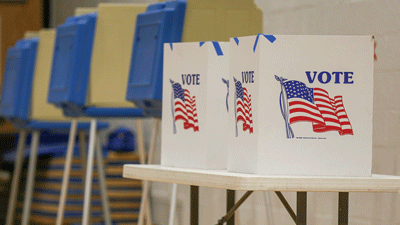SOUTHFIELD — Optimist Club President Cherryl Thames said there is a real need to start the conversation about mental health. The problem is here, and the time is now.
“I personally feel that sometimes we don’t know how to start a conversation,” said Thames. “We don’t know how to make it not intimidating. One of the topics being discussed is drug use. So, say you think your kid is on drugs. How do you approach that conversation without causing them to shut down?”
Thames has been with the Southfield-Lathrup Village Optimist Club for 22 years, and the mental health crisis among teenagers was brought to her attention in 2019 by a Junior Optimist high school student. The student expressed concern that many of her peers were dealing with depression. This prompted the Junior Optimist Michigan District's Board of Directors to invite a speaker to their convention to discuss mental health. Thames explained that the need for discussion around these topics only kept progressing with the pandemic and then the Oxford High School shooting tragedy last year. The grant was from the Optimist International Foundation called the Childhood Health and Wellness Matching Grant to take this discussion to the next level. Thames had initially planned for the first forum, which was held in May, to focus just on depression and suicide, but felt compelled to include crime, abuse and triggers in the discussion as well.
On Dec. 1, the city of Southfield partnered with Lathrup Village, Southfield Public Schools, the Southfield-Lathrup Village Optimist Club, and Metro Detroit Youth Clubs to host a virtual Teen Mental Wellness Community Forum.
Dr. Kenneth Coleman, the director of community health for Ascension Southeast Michigan Community Health, moderated the forum.
The panel featured James V. Jackson, Southfield Public Schools’ chief of staff, covering “What’s Happening with Our Youth Today.” Dr. Jacqueline M. Stavros, a Lawrence Technological University business professor and the author of “Conversations Worth Having,” presented as well.
Southfield police officers Raymond Hood and Brandon Walker presented “Youth Triggers,” Lathrup Village police officer Keith Roberts discussed “Youth Warning Signs,” and Ascension mental health professional Darryl Allen presented “The Stigmas of Mental Health.”
The forum was open to both adults and teenagers, with the intention of helping listeners develop a skill set to begin conversations surrounding mental health topics and identify various triggers and signs that someone is dealing with depression or suicidal thoughts.
Thames’ longtime colleague, Stavros, offered a presentation on the fixed mindset versus the growth mindset, and what it means to have conservations that are “above the line.”
She explained that to be “above the line” means to be in a headspace where you are “resilient, creative, open-minded,” a space where you’re accessing critical thinking.
Being “below the line” refers to a negative headspace where you are “deprecating, blaming, and shaming.” Starvos encourages parents to lean into questions like, “What’s going on for you? How can I help you?” She recommended using the technique of being above the line to help foster an environment free of distractions where their child feels safe opening up.
This panel comes at a significant time in the overall discussion of mental health, specifically for adolescents.
Just last fall, the American Academy of Pediatrics, the American Academy of Child and Adolescent Psychiatry, and the Children’s Hospital Association declared a national emergency in child and adolescent mental health. In their address, they stated that rates of child and adolescent mental health concerns have been on the rise since 2010, but they have accelerated due to the stress brought on by the pandemic. Their data shows that by 2018, suicide was the second leading cause of death for youth ages 10-24.
The American Academy of Pediatrics, the American Academy of Child and Adolescent Psychiatry, and the Children’s Hospital Association added, “The pandemic has intensified this crisis: Across the country we have witnessed dramatic increases in Emergency Department visits for all mental health emergencies including suspected suicide attempts.”
In their presentation on “Youth Triggers,” Hood and Walker identified various triggers that can spark a mental health crisis, including, among other things, crime, domestic violence, bullying, cyberbullying and drugs. Youth need not be involved in these triggers to be affected by them. Merely witnessing them can be damaging. They also clarified that domestic violence can occur in a variety of relationships and households: heterosexual couples, same-sex couples, other family members, and roommates.
“Domestic violence is the physical, verbal aggression that takes place between two parties,” Hood said. “It can have a severe effect on both individuals involved and also detrimental effects to the developing minds of any children or teens inside the home. Because domestic violence is reoccurring, those who witness it are exposed to chronic traumatic experiences, such as post-traumatic stress disorder, anxiety, high degrees of stress, depression, substance abuse and addiction, truancy and delinquency, self-blame and low self-esteem, displays of aggression, eating disorders, trouble sleeping, hyperactivity, hypervigilance, and self-harm.”
Walker added that there have been signs that people who experience domestic abuse at a young age “sometimes are prone to either be the aggressor years later or become somewhat prone to accept domestic violence from them seeing it at a young age.”
Allen opened his address on “The Stigmas of Mental Health” by likening leaving mental health concerns unaddressed to leaving a broken ankle untreated for a decade.
“Think about how it would feel to internalize that pain and walk through those 10 years pretending the injury and the pain does not exist. What if we placed the same importance on mental health and mental health conditions as physical health and physical health conditions?”
Allen shared some statistics from the Centers for Disease Control and Prevention, stating that about 1 in 5 children experience mental illness, about 6 million children have an anxiety disorder, about 5 million have a behavior-related disorder, and about 3 million children suffer from depression.
“Nearly 20% of high school students have reported serious thoughts of suicide, and 9% have made an attempt to take their life,” Allen added. “Due to the overwhelming amount of evidence pointing to this epidemic facing youth and young adults, Allen strongly urges the community to stop stigmatizing mental health issues and start treating them with the same importance placed on physical health issues.
Resources can be found at southfield-lathrupvillageoptimists.org/latest-news. The next panel will be held in person on Sunday, May 7.
 Publication select ▼
Publication select ▼
























